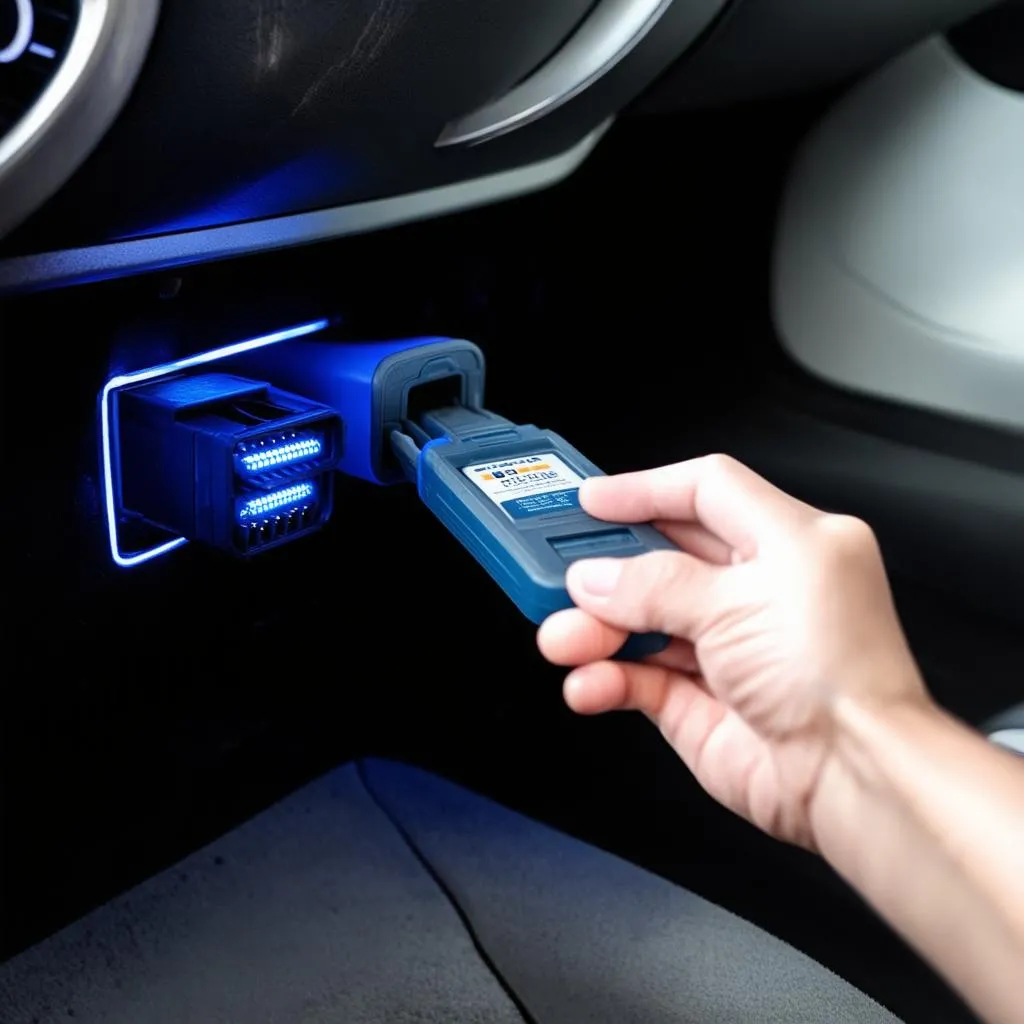“A stitch in time saves nine,” my grandfather used to say, and nowhere is that truer than with car maintenance. Remember that time your engine light decided to throw a rave and you had no idea what was going on? Fear, confusion, maybe a little anger – it’s a cocktail no driver enjoys. But what if you could understand your car’s cries for help? That’s where the magic of extracting OBD fault codes with a computer comes in.
Understanding the Jargon: OBD Fault Codes and Why They Matter
Imagine your car speaking a secret language. OBD fault codes are that language, a system of standardized codes that illuminate the mysteries behind your car’s dashboard warning lights. OBD stands for On-Board Diagnostics, a computer system in your car that monitors emissions, engine performance, and other critical systems.
When something goes awry, the OBD system stores a specific code in its memory, like a digital breadcrumb trail leading you to the root of the problem. Extracting these codes with a computer is like having a real-time conversation with your car, understanding its woes and addressing them before they escalate.
Why Extract Codes Yourself?
You might be thinking, “Isn’t this a job for a mechanic?” Well, yes and no. While a qualified mechanic has the expertise for complex repairs, extracting OBD codes yourself using a computer offers several benefits:
- Early Detection: Catch problems early before they become major (and expensive) headaches.
- Save Money: Avoid unnecessary trips to the mechanic for simple diagnoses.
- Empowerment: Understand your car better and make informed decisions about its maintenance.
How to Extract OBD Fault Codes with a Computer
Extracting OBD fault codes might seem intimidating, but it’s simpler than you think. Here’s a step-by-step guide:
- Locate Your OBD-II Port: This port, often shaped like a trapezoid, is usually located under the dashboard on the driver’s side.
- Choose Your Weapon: OBD-II Scanner: Invest in a reliable OBD-II scanner. You can find options online or at auto parts stores.
- Connect and Power Up: Connect the scanner to your car’s OBD-II port and turn the ignition to the “on” position (don’t start the engine).
- Access the Codes: Use the scanner’s menu to select “Read Codes” or a similar option. The scanner will communicate with your car’s computer and display the stored fault codes.
- Decode and Conquer: Each code represents a specific problem. Consult a reliable online OBD-II code database or your vehicle’s repair manual to decipher the meaning of each code.
 OBD-II Scanner Connection
OBD-II Scanner Connection
Decoding the Mystery: Common OBD-II Codes
Here are a few examples of common OBD-II codes and their potential meanings:
- P0420: Catalyst System Efficiency Below Threshold (Bank 1) – This code often indicates a problem with the catalytic converter, a crucial component of your car’s emissions system.
- P0301: Cylinder 1 Misfire Detected – This code suggests a problem with the ignition system, fuel system, or internal components of cylinder 1.
- P0171: System Too Lean (Bank 1) – This code indicates that the engine is receiving too much air or not enough fuel, potentially due to a vacuum leak, faulty sensor, or fuel delivery issue.
Remember, these are just a few examples. The specific codes and their meanings can vary depending on your car’s make, model, and year.
Beyond the Codes: Feng Shui and Your Car’s Well-being
Now, you might be wondering, “What does Feng Shui have to do with my car?” While it might seem unusual, some believe that maintaining a harmonious flow of energy in your car can promote safety and well-being on the road.
While we can’t guarantee that a perfectly placed crystal will prevent a flat tire, keeping your car clean, organized, and free of clutter can certainly create a more positive and focused driving experience.
 Mechanic Diagnosing Car Issue
Mechanic Diagnosing Car Issue
Don’t Panic, Diagnose!
Extracting OBD fault codes with a computer might seem like venturing into uncharted territory, but it’s a journey worth taking. By understanding your car’s language, you become an empowered driver, capable of addressing issues proactively and ensuring a smoother, safer, and potentially less expensive driving experience.
Remember that “techcarusa.com” is here to guide you on your automotive journey. For further assistance with diagnostic tools or expert advice, don’t hesitate to contact our team on WhatsApp at +84767531508. Our dedicated support team is available 24/7 to help you navigate the world of car maintenance and repair.
Need more information on specific OBD codes? Check out our other helpful resources: